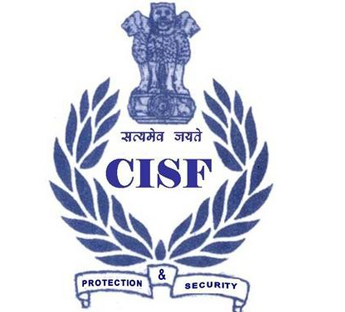The Central Industrial Security Force (C.I.S.F) (established in its present form: 15 June 1983) is a Central Armed Police Force in India.
It was set up under an Act of the Parliament of India on 10 March 1969 with a strength of 2,800. CISF was subsequently made an armed force of the Republic of India by another Act of Parliament passed on 15 June 1983. Its current sanctioned strength is 142,526 personnel.
It is directly under the Union Ministry of Home Affairs and its headquarters are at New Delhi.
The CISF provides security cover to 300 industrial units and other establishments located all over India. Industrial sectors like atomic power plants, space installations, mints, oil fields and refineries, major ports, heavy engineering, steel plants, barrages, fertilliser units, airports and hydroelectric/thermal power plants owned and controlled by Central Public Sector Undertakings (PSUs), and currency note presses producing Indian currency are protected by CISF. It thereby covers installations all over India straddling a variety of terrain and climatic conditions. CISF also provides consultancy services to private industries as well as other organisations within the Indian government. The consulting wing has amongst its clients some of the renowned business houses and organisations of India including TISCO, Jamshedpur; SEBI Hqrs. Mumbai; Vidhana Sabha, Bangalore; Orissa Mining Co., Bhubaneswar; Telangana Assembly, Hyderabad; Bangalore Metropolitan Transport Corp.; HIL Kerala;IB Thermal plant,Odisa; IARI, Delhi; NBRI, Lucknow and Electronics City, Bangalore. The scope of CISF’s consulting practice includes security consulting and fire protection consulting.
CISF is just a unique organisation in paramilitary forces for India, which works for sea ways, airways and some of the major installations in India. In CISF there are some reserved battalions which works with the state police to protect law and orders. CISF plays a major role in Disaster Management, for Disaster Management course the personnel are trained from NISA, Hyderabad. Another unique thing which the CISF has is a Fire Wing which helps during fire accidents in Industries where CISF is on guard.
Raising and charter
It was set up under an act of the Parliament of India on 10 March 1969 with a strength of around 2,800 personnel and as the name suggests, it was created for the better protection and security of industrial undertakings in the country. There was a limitation though, that industries to be provided protection should be wholly owned by the central government, which has since been modified so that the industries can now be a joint venture with the central government. However the role of CISF has undergone a diversification and it now also protects airports, seaports, metro rail networks, government buildings, heritage monuments (including the Taj Mahal and Red Fort), opium and alkaloids extractions, nuclear power plants, and space installations. It also specialises in VIP security as well as disaster management.
Structure and organisation
CISF personnel at Red Fort, Delhi
The CISF is headed by an Indian Police Service officer with the rank of Director-General, assisted by an IPS officer in the rank of Addl. Director-General. The force is divided into seven Sectors (Airport, North, North-East, East, West, South and Training), and also has a Fire Service Wing.
The Airport Sector is commanded by an IPS officer in the rank of Addl. Director-General, assisted by an Inspector-General. The Airport Sector is divided into a number of Field Formation Units, one for each airport. Units at major international airports are commanded by a Deputy Inspector-General or Commandant; units at smaller airports by a Deputy or Assistant Commandant. The other six Sectors are each commanded by an Inspector-General, who is assisted by a Deputy Inspector-General.
The five regional Sectors are divided into Zones, each commanded by a Deputy Inspector-General. Within each Zone are a number of Units, each under the command of a Commandant, or a DIG for certain major Units. A Deputy Commandant serves as the second-in-command of most units, or as the head of a smaller unit. Within the Training Sector, the National Industrial Security Academy (NISA) is headed by an Inspector-General; the Fire Service Training Institute (FSTI) and six other recruit training centres are headed by Deputy Inspector-Generals.
The Financial Adviser of the CISF has been an Indian Revenue Service officer of the rank of Director and also has Dy Advisers from the Indian Audit and Accounts Service and Indian Civil Account Service.
(Ref : https://en.wikipedia.org/wiki/Central_Industrial_Security_Force & www.perfectprofile.net)
